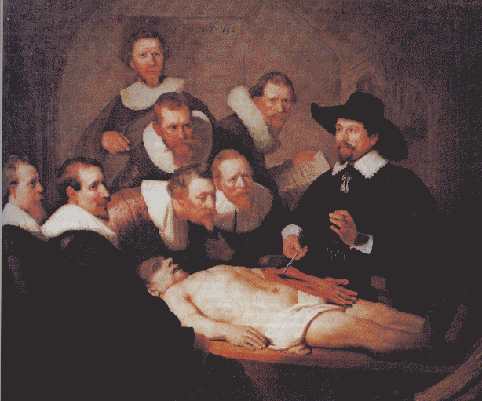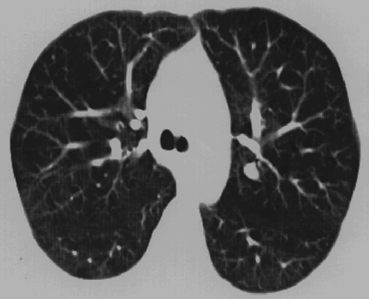
The Anatomical Lesson of Professor Nicolaas Tulp by Rembrandt (1632). The body is that of the villain Aris Kindt who was put to death

by Michael Keane
At CWI and Delft University of Technology, in collaboration with the Daniel den Hoed clinic in Rotterdam, a sustained attempt is being undertaken to develop a realistic stochastic lung model. The research is part of the Dutch Research Council NWO's programme `Computer Intensive Methods in Stochastics'.
No visitor to The Netherlands should miss a visit to the exquisite Mauritshuis in The Hague, and in particular to Rembrandt's celebrated `Dr. Tulp's Anatomical Lesson'. In those days, dissection was permitted once a year, and this first commissioned work of Rembrandt (I like to call it his `dissertation') documents early interest in the inner structure of the human body in an unusually illuminating manner. Three hundred sixty years later, scientists still struggle with the acquisition of such inner knowledge.

People come in all different shapes and sizes, and thus so do their lungs. Optimization of diagnostic procedures for lung-related illnesses must take into account the shape statistics and variation of lungs, which may also be correlated with the illnesses themselves. If we can produce a large number of `typical' lung pairs via computer simulation, and are able to do our experiments on these instead of on living beings, diagnosis suddenly becomes less harmful and more inexpensive.
The situation is comparable to the use of computer simulation instead of wind tunnels in the aircraft industry, where in the medical field the ethical aspects form even another argument in favor of simulation. If in addition we can determine a small number of significant shape parameters, our understanding of the simulation results can be greatly enhanced.

The fascination of geometry - the study of shape - is solidly rooted in its complexity. It is not at all obvious, and in fact beyond our present techniques, how to attach a small number of parameters to a three-dimensional object such as a lung, so that the shape of the lung can be reconstructed from the parameter values. Moreover, it is not clear how to average complex geometrical shapes. Of course, we can try two-dimensional objects, and use only methods which can be extended to three dimensions. In two master's theses at Delft some promising results in this direction have been obtained. A dissertation at CWI is underway treating the more fundamental modelling aspects.
Finally, it is hoped that other organs, notably heart and liver, will be amenable to the same type of modelling. This can only be achieved by advancing our fundamental understanding of stochastic geometry. Theoretical results are here of primary importance.